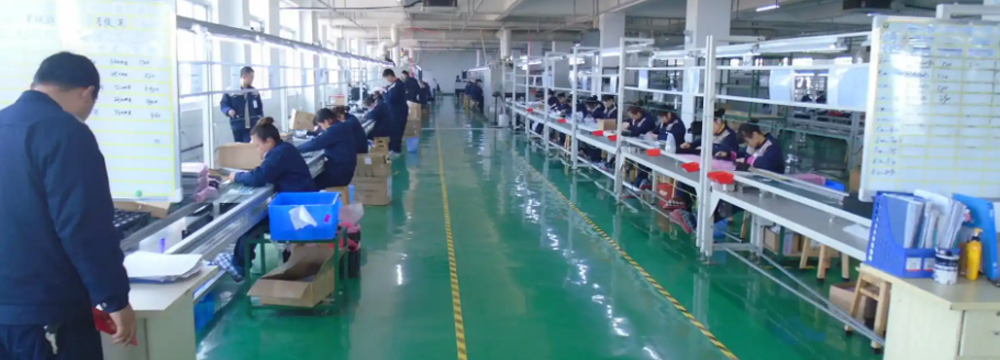In the wave of global energy transformation, China's new energy industry's "three new things" - photovoltaics, energy storage batteries and electric vehicles, are becoming the core engine of export growth. From the 2000V high-voltage system of photovoltaic inverters, to the efficient charging and discharging of sodium-ion battery energy storage, to the 800V electric vehicle fast charging architecture, high-voltage power supply technology is reshaping the entire chain of energy conversion, storage and use. This article will deeply analyze how high-voltage power supplies have become an invisible promoter of the development of the "three new things" industry, and explore its future technology trends and market impact.
High-voltage power supplies are widely used in communications, power, automatic control, railways, instrumentation, aerospace, industrial automation and other fields, and are an indispensable device.
What is a high-voltage DC power supply
High-voltage DC power supply is also called DC high-voltage power supply. It is a power supply with AC mains or three-phase power input and DC voltage output of more than thousands of volts or tens of thousands of volts. The output power ranges from hundreds of watts to thousands of watts, and it can generally stabilize voltage or current. The earlier DC high-voltage power supply is to step up the AC mains or three-phase power from the industrial frequency high-voltage transformer to AC high voltage, and then rectify and filter to obtain DC high voltage.
Due to the low frequency, the size and weight of the power supply are relatively large, and the conversion efficiency and stability are poor. With the development and maturity of switching power supply technology, DC high-voltage power supplies developed by combining high-frequency switching conversion technology with the characteristics of high-voltage power supplies have become mainstream.
Classification of high-voltage DC power supplies:

High-voltage distributed DC power supplies
High-voltage distributed DC power supplies are a new type of DC power supply equipment, mainly used in small switch stations and user terminals, providing reliable and uninterrupted working power for secondary control lines (such as intelligent terminals such as microcomputer protection and indicator lights, analog indicators, etc.), avoiding the loss of protection of microcomputer protection when AC power is lost, and solving the problem of UPS failure due to operating overvoltage and harmonics, which leads to microcomputer protection failure.
At the same time, it can also provide DC operating power for primary switch equipment (spring mechanism vacuum circuit breakers, permanent magnet mechanism vacuum circuit breakers, electric load switches, etc.) that meet the power requirements of the device.
Wall-mounted DC power supply
The wall-mounted DC power supply is suitable for small switch stations, small user substations and small 10KV substations. The system adopts an integrated design concept and consists of a rectifier module, a monitoring module, a step-down unit, a distribution unit and a battery installation box. It has the characteristics of small size, simple structure and independent system. The monitoring module uses LCD Chinese character menu display, which has perfect system monitoring and battery automation management functions. It has four remote interfaces connected to the automation system, provides two communication interface options of RS232 and RS485, and provides three communication protocols of RTU, CDT and MODBUS.
Micro DC operating power supply
The micro DC operating power supply is mainly used in substations, switchgear, ring network cabinets and box-type substations, etc., to provide reliable DC power for primary switchgear (vacuum circuit breakers, vacuum contactors, load switches, etc.) and secondary control, protection and signal circuits (such as microcomputer protection, remote control unit RTU, load control device, indicator light, analog indicator, intelligent instrument, etc.).
1. Photovoltaic industry: High voltage improves power generation and energy storage efficiency
1.1. 2000V high voltage system reduces photovoltaic levelized cost of electricity (LCOE)
Traditional photovoltaic power stations generally use 1500V DC systems, but with the increase in component power (such as TOPCon, HJT and other high-efficiency battery technologies), higher system voltages have become a trend. 2000V high-voltage photovoltaic systems can reduce current loss, reduce cable and inverter costs, and reduce the overall levelized cost of electricity (LCOE) of power stations by about 2%-5%.
Sungrow's "1+X modular inverter" already supports 2000V high-voltage architecture, and achieves off-grid power generation through "photovoltaic black start" technology, greatly improving the construction efficiency of desert photovoltaic projects.
The 2400V programmable DC power supply launched by Kewell can simulate the test environment of high-voltage photovoltaic arrays to ensure the stability of inverters under extreme working conditions.
1.2. High-voltage DC microgrid optimizes energy storage coupling
In the "photovoltaic + energy storage" system, the high-voltage DC bus (such as 1500V-2000V) can reduce the AC/DC conversion link and improve the overall efficiency. For example:
Singapore's household photovoltaic storage system uses a DC energy meter (DJSF1352RN) to directly monitor photovoltaic power generation and battery charging and discharging, reducing conversion losses.
Compressed air energy storage combined with ultra-high voltage transmission uses abandoned salt caverns to store high-pressure air to achieve low-cost, long-term energy storage.

2. Sodium energy storage: high-voltage technology breaks the bottleneck of cycle life and cost
2.1. High-voltage sodium-ion batteries improve energy density
Sodium batteries are regarded as complementary technologies to lithium batteries because of their rich resources (2.75% of the earth's crust reserves) and excellent low-temperature performance (still able to work at -40°C). However, the energy density of early sodium batteries was only 120-140Wh/kg, which restricted its commercialization. High-voltage electrolyte and cathode materials are the key to breakthroughs:
The sodium hexafluorophosphate (NaPF6) electrolyte developed by Dofluoro has increased the energy density of sodium batteries to 130-140Wh/kg, close to the level of lithium iron phosphate.
CATL's second-generation sodium battery uses a high-voltage layered oxide cathode with an energy density of over 200Wh/kg, and plans to mass-produce it in 2025.
2.2. High-voltage fast charging technology accelerates the application of sodium batteries
The high rate characteristics of sodium batteries (charged to 90% in 12 minutes) make them suitable for frequency regulation applications in energy storage power stations. The 10MWh sodium battery energy storage power station put into operation by the Southern Power Grid has an energy conversion efficiency of over 92%, which is 9% higher than that of the lithium battery system. In the future, combined with an 800V high-voltage DC bus, sodium batteries are expected to replace lead-acid batteries in scenarios such as data centers and 5G base stations.
3. Electric vehicles: 800V architecture reshapes the energy replenishment ecosystem
3.1. High-voltage platform achieves ultra-fast charging
Electric vehicles move from 400V to 800V high-voltage architecture, and the charging power increases from 150kW to 350kW+, making "charging for 5 minutes and a range of 200 kilometers" possible. For example:
Xpeng G9 is equipped with an 800V SiC electric drive system, which is equipped with a 480kW super charging pile to greatly shorten the energy replenishment time.
The high-frequency switching characteristics of GaN (gallium nitride) devices make the efficiency of 800V on-board OBC (on-board charger) exceed 95%.
3.2. High-voltage sodium batteries may become the "second growth curve"
BYD and other companies are exploring the combination of sodium electricity + 800V high-voltage system to reduce battery costs (it is expected that the BOM cost will be 30% lower than that of iron lithium in 2025). In the future, sodium electricity may be used in A0-class electric vehicles or hybrid models, forming a "lithium-sodium complementary" pattern.
4. Future Challenges of High-Voltage Power Technology
Although the trend of high-voltage is clear, it still faces three major challenges:
Supply chain bottleneck: SiC/GaN power devices rely on imports, and the localization rate is less than 30%3.
Inconsistent standards: High-voltage interface protocols in the field of photovoltaic storage and charging (such as CHAdeMO vs. CCS) still need to be integrated.
Grid adaptability: High-power charging (such as 350kW+) needs to be matched with intelligent scheduling to avoid local grid overload.
Conclusion
High-voltage power technology is like an invisible "energy highway", connecting the three major industries of photovoltaic, sodium electricity, and electric vehicles, and promoting the development of the "new three things" towards high efficiency and low cost. In the future, with the popularization of wide bandgap semiconductors (SiC/GaN), breakthroughs in sodium electricity high-voltage electrolytes, and the implementation of photovoltaic storage and charging integrated standards, high-voltage technology will further release the potential of the new energy industry and help achieve the global carbon neutrality goal.
Share our interesting knowledge and stories on social media













